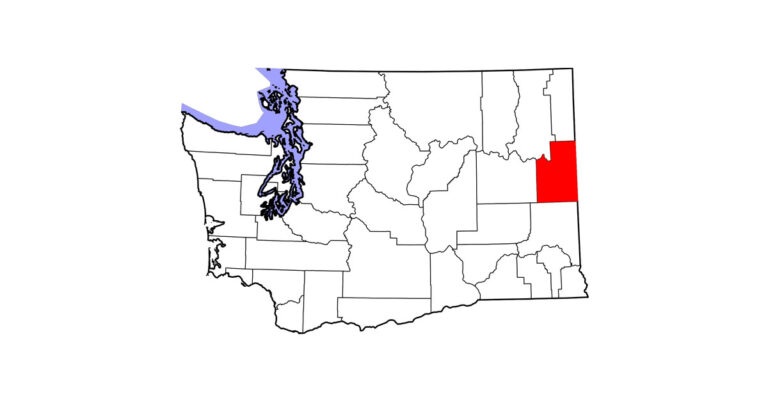Do you have trouble sitting the trot? Is it harder to bend your horse in one direction than the other? Do you feel out of balance over jumps? German sports physiologist and popular clinician Eckart Meyners has designed an exercise program to help riders overcome problems such as these. His Balimo (“BALance In MOtion”) Equestrian Program teaches you how to balance your muscles by strengthening the weak ones and loosening the strong, tight ones. It also helps you to improve your coordination, while “unblocking” tension in your body that inhibits its free movement. All of these benefits will improve your overall balance and will facilitate your body control and awareness in the saddle. This will allow for clearer, more precise communication with your horse.
Eckart has identified the most common muscle imbalances that riders struggle with and has designed more than 100 exercises to help rebalance them. The Balimo exercises also improve “cross-coordination”–the communication between the left and right sides of the brain. Moving your diagonal limbs (left arm/right leg, right arm/left leg) together encourages this communication in your brain which, in turn, helps to balance the two sides of your body. As a result, you’ll find coordinating your leg, hand and seat aids in the saddle easier.
Concentrating too much on your position while riding, however, actually prevents you from focusing fully on your horse. The best way to promote harmony with him is to work on your own body first, before you ride.
But who has time to warm up, exercise and ride in the same day? If you’re as busy as most riders, you need to integrate your body-balance exercise program into your daily life. This two-article series will show you how to do that with some of Balimo’s fun, effective muscle-balancing and cross-coordination exercises. Fun is the key word. The more you enjoy what you’re doing, the faster your body will learn and improve and the more likely you are to keep it up!
The Warm-Up
Before you try to improve your body (and before you even get in the saddle), give it a chance to warm up. A proper warm-up will prepare your circulatory, muscular, nervous and hormonal systems to work. Your respiration will increase, allowing a speedier delivery of needed nutrients and oxygen to your muscles and prompt removal of their metabolic byproducts, such as lactic acid. Your body temperature will rise, thus lowering the friction between muscle fibers, reducing tension, cramping and the possibility of injury and stimulating an increase of cartilage-nourishing fluid in your joints. This will also increase your range of motion, flexibility and relaxation.
The interaction between your nervous system and your muscles, tendons and ligaments will improve as well, resulting in better body awareness and coordination. Meanwhile, a good warm-up prepares you mentally and emotionally to focus on the task at hand.
Ideally, your warm-up should last about 20 minutes, but if your time is limited, break it into mini warm-ups throughout your day. The effects will last until you get on your horse, even if that’s hours later. Here are just a few warm-up exercises
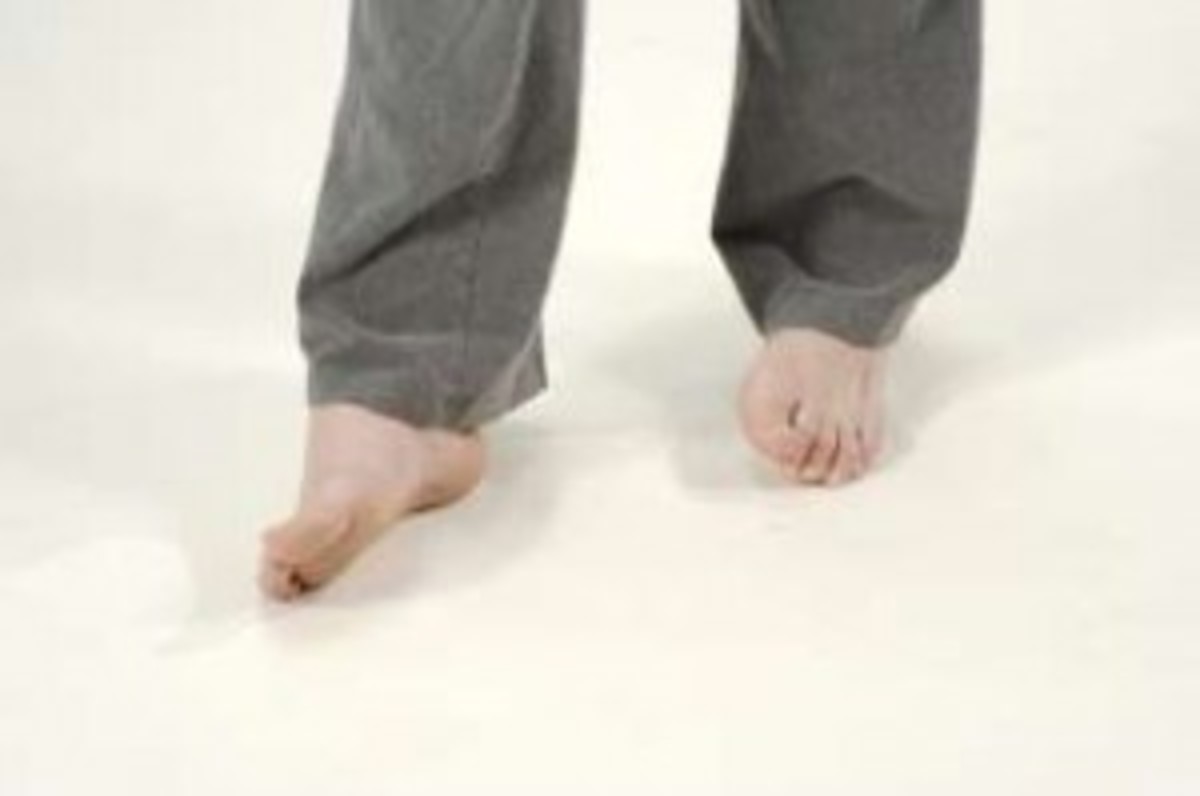
Exercise 1: Walk on four sides of your feet
Benefits: While helping to warm up your entire body, this exercise increases your body awareness.
How to do it: Start by walking normally for a few steps, then roll your ankles out so you’re walking on the outsides of your feet for several steps (Photo A, left). Next, roll your ankles toward each other and walk on the insides of your feet (Photo B, below). Then walk on your toes and, finally, on your heels. When you return to a normal walk, your whole body will feel lighter and more balanced. This is an easy exercise to do while walking around the house, walking the dog or leading your horse.
By experimenting with contrasting weight and body positions, you teach your body to recognize when it is upright and centered and when it is not. This concept can be applied to any physical movement on the ground or in the saddle. For example, in the saddle, by leaning far to the right and then far to the left, it’ll be easier to recognize when you’re truly sitting in the center.
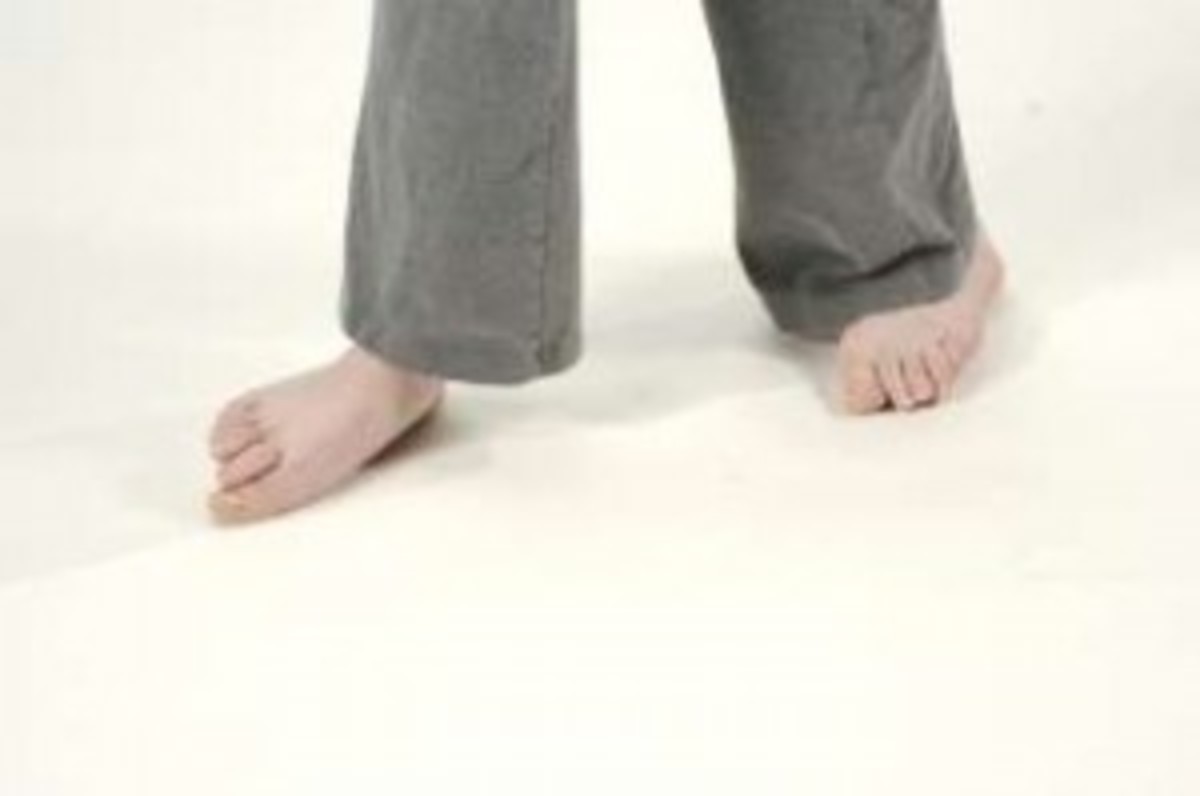
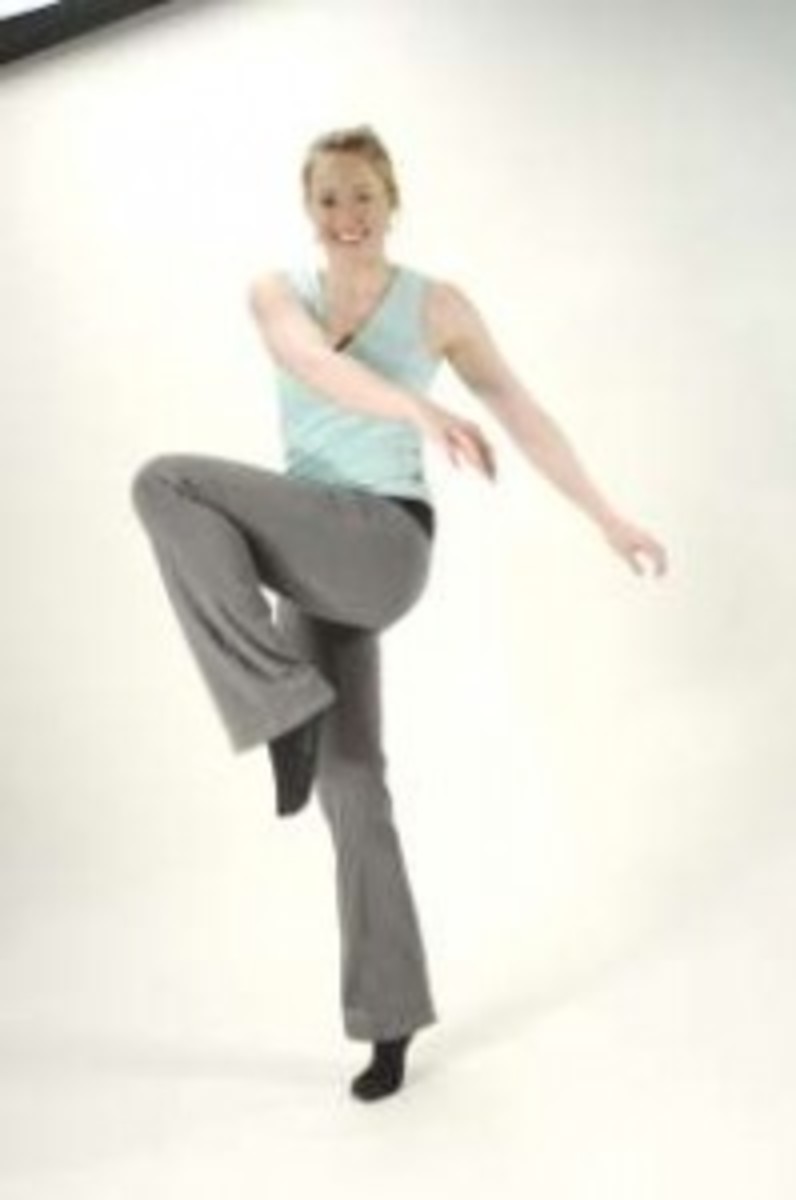
Exercise 2: Skipping
Benefits: Here’s another all-body warmer with an added cross-coordination component.
How to do it: Skipping sounds simple, doesn’t it? But to boost your cross-coordination skills, try crossing your midline (an imaginary line down the middle of your body, intersecting with your nose and belly button) with your diagonal limbs. Be sure you’re twisting in your torso with each stride.
As your left foot leaves the ground, pull that knee up and to the right, while reaching diagonally across your body to the left with your right arm. In the next step, twist in the other direction, bringing your right knee and left arm across your body. Skip everywhere: down the barn aisle, out to the pasture to fetch your horse, from your car to the grocery store. You may feel silly at first–until you discover how much it helps your riding!
Exercise 3: Crawling
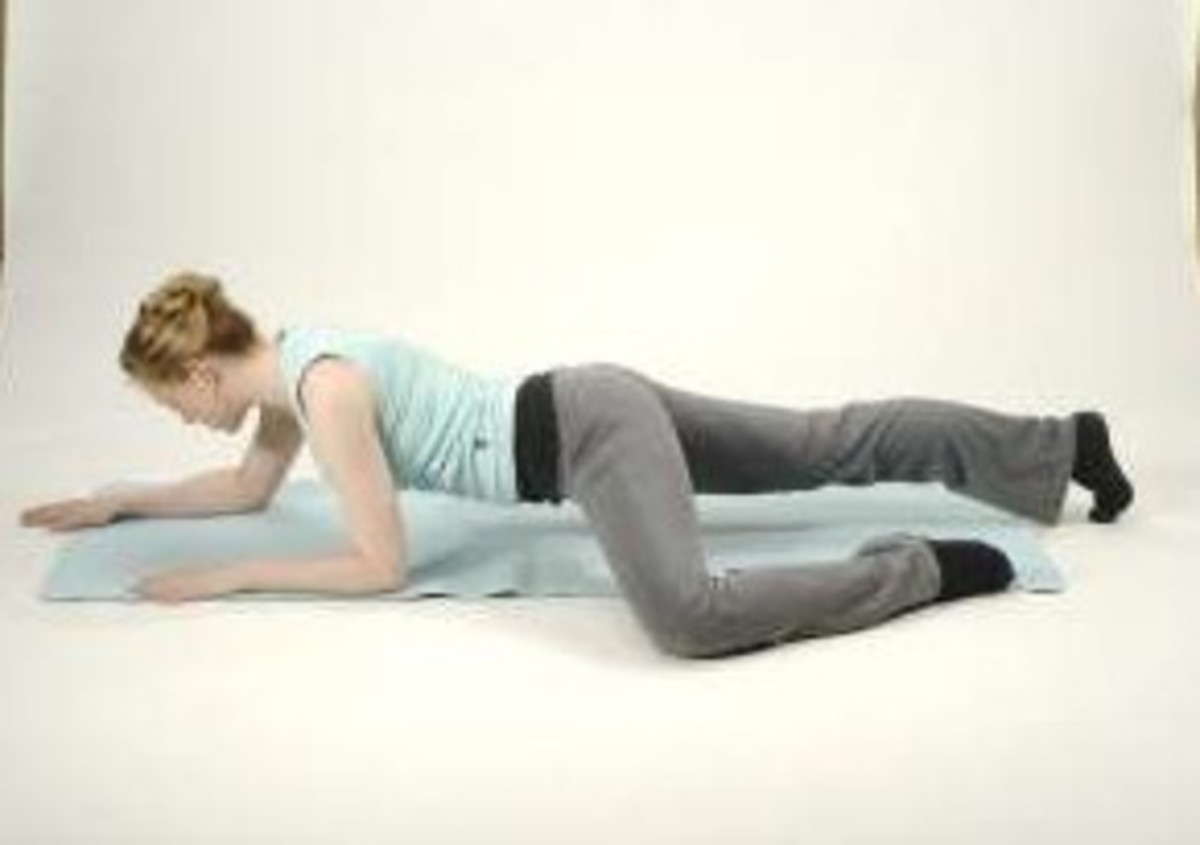
Benefit: The diagonal hand-knee motion of crawling is believed to be an essential component of coordination development in human babies. By revisiting it as adults, we strengthen the connection between the left and right sides of our brains.
How to do it: While watching TV or listening to the radio, crawl back and forth across your living room floor for a few minutes. Try several variations: crawling forward like a bear, sideways like a crab, with your belly against the ground, or pulling yourself forward with your elbows, commando-style. This last variation also helps to loosen and relax your lower back.
The next set of exercises addresses common rider problems in specific parts of the body.
The Head
You probably don’t realize how much work it is for your body to hold up your heavy head (11 to 15 pounds!) and how much a slight head tilt can throw the rest of your body off balance. A slight head tilt to one side can cause a weight shift in the other direction. For example, if your head tilts slightly right, you’ll sit more to the left. Any misalignment between your head and spine causes stiffness in your occipital joint, which joins your head to your neck. This critical joint must be loose to allow the other joints in your body to swing freely and rhythmically with your horse’s motion.
Your eyes play a large role in your balance and coordination, as well. Because vision is one of our dominant senses, the movement of our eyes leads the motions of our heads and bodies. If your gaze is fixed, your head and neck will be rigid. By learning to move your eyes and head independently from one another, you can increase your head’s range of motion and allow the rest of your body to move underneath it more freely.
Exercise 4: Shake your head
Benefits: This loosens up your occipital joint and relaxes tension in your neck.
How to do it: Sitting on a firm chair, balance on your two seat bones, with your arms hanging by your sides, looking straight ahead. Using as little effort as possible, gently shake your head side-to-side to the left and right (as in shaking your head “no”) in small movements, about an inch in each direction. Do this for about one minute. Then turn your head slightly to the left and repeat these small head oscillations to the left and right of this new position for another minute. Repeat with your head slightly to the right.
Exercise 5: Reach your eyes
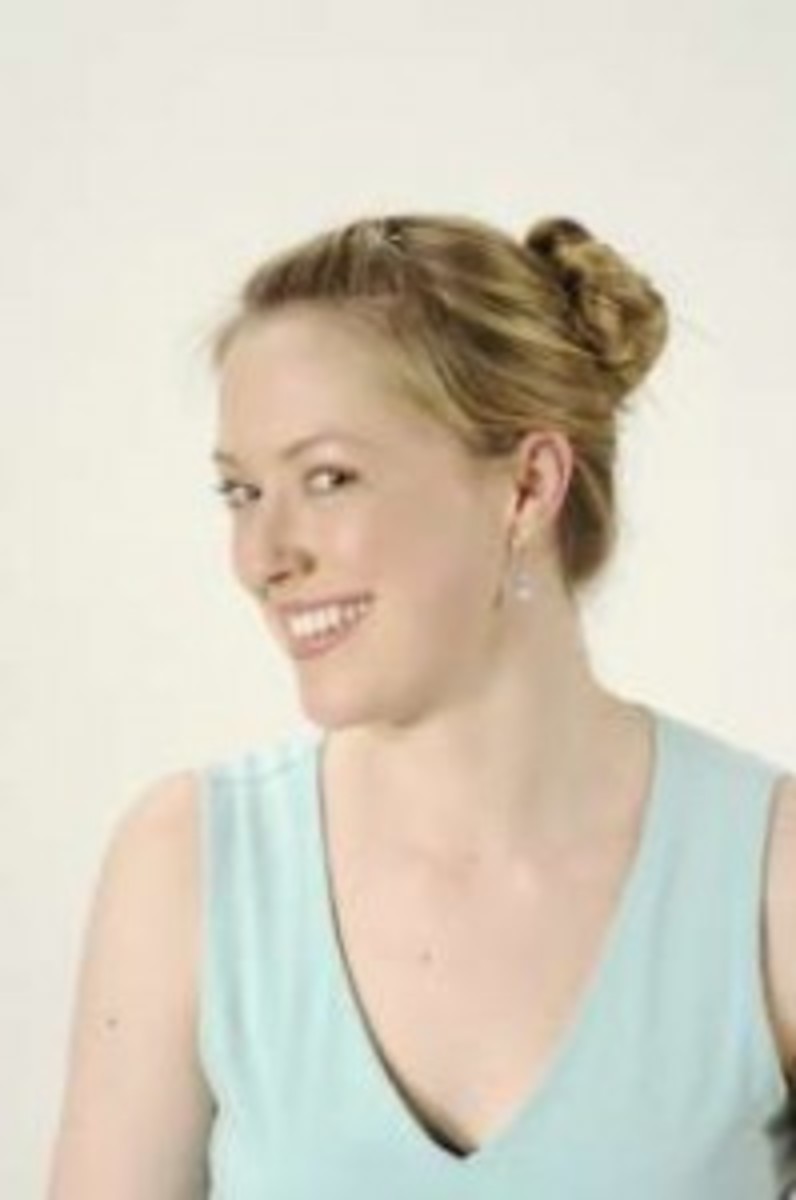
Benefit: This helps you separate your eye and head movement to improve your relaxation, balance and coordination.
How to do it: Sit or stand looking straight ahead. Then slowly turn your head to the right and left, looking in the direction that you turn. Repeat this 10 times in each direction. Next, turn your head right and left while moving your eyes in the opposite direction?for example, looking left while you turn right. Do this 10 times in each direction. Experiment throughout your day, sometimes moving your eyes with your head and other times moving them independently.
Chest and Upper Torso
When your upper body is relaxed and balanced, it feels as if it is carrying itself, giving your pelvis room to swing freely underneath and allowing your arms to hang naturally by your sides. This creates a soft, fluid feeling through your hands to the reins and your horse’s mouth, improving the consistency and sensitivity of your contact, as well as the precision of your rein and seat aids.
Exercise 6: Eagle
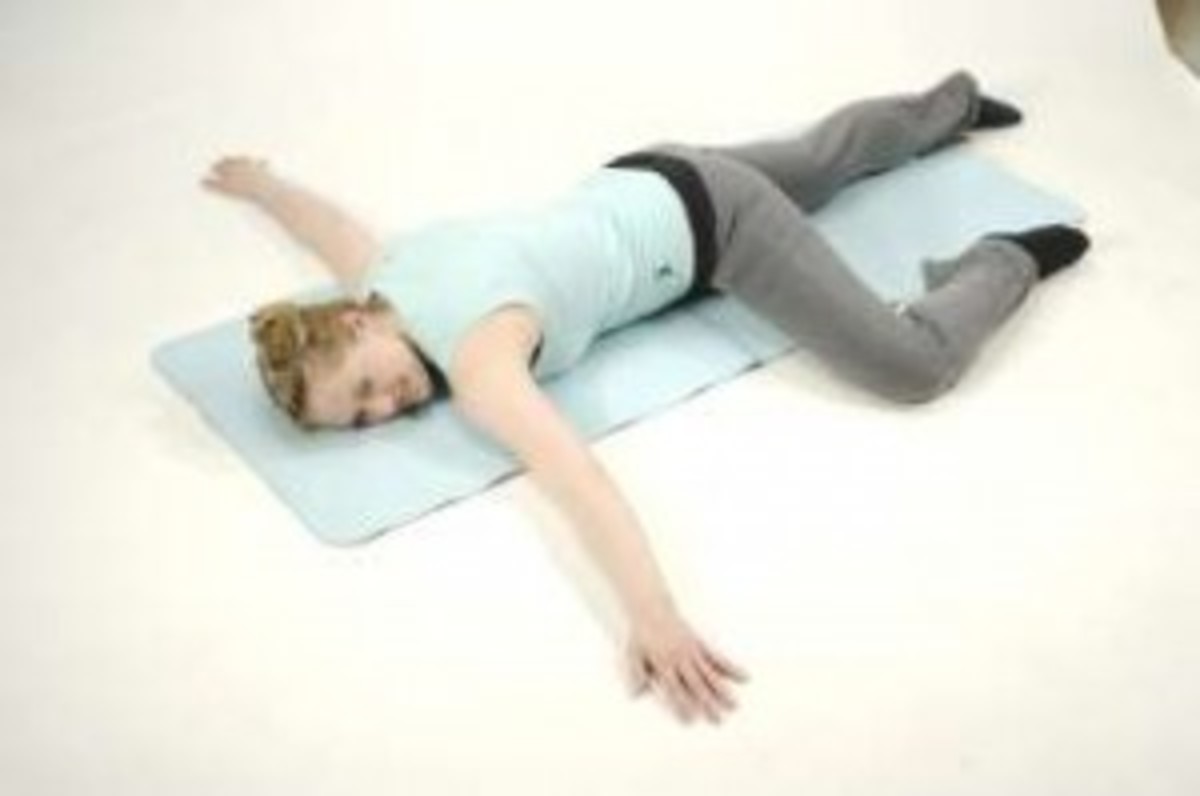
Benefits: You don’t even have to get out of bed for this exercise! It helps open your chest and loosen tight shoulders, while strengthening the muscles between your shoulder blades. As a result, you’ll find it easier to balance your upper body in the saddle and to maintain a soft contact on the reins.
How to do it: Step 1: Lie down on your stomach with your arms out to your sides, palms down, your head turned to the left, your right leg straight, your left knee bent at a 90-degree angle, and your left thigh making a 90-degree angle with your body.
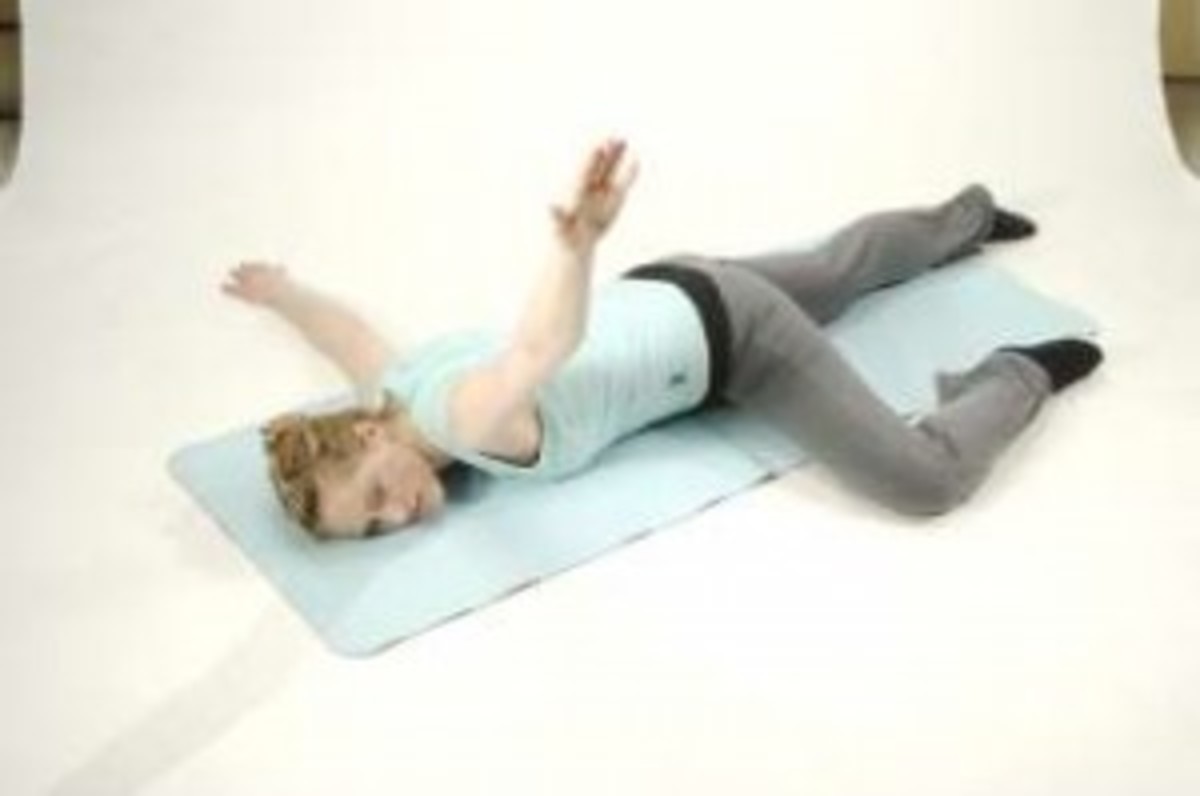
Step 2: To test your range of motion, raise your left arm up in the air as high as possible without straining. Then lower it.
Step 3: Bend your left wrist so your fingertips point to the sky and lift your arm again without straining. Repeat this eight times, ?alternating bending and straightening your wrist.
Step 4: Turn your head to the right and repeat Step 3, without changing your leg position.
Step 5: Straighten your left leg and bend your right knee and hip. Lift and lower your left arm another eight times, still alternating bending and straightening your wrist.
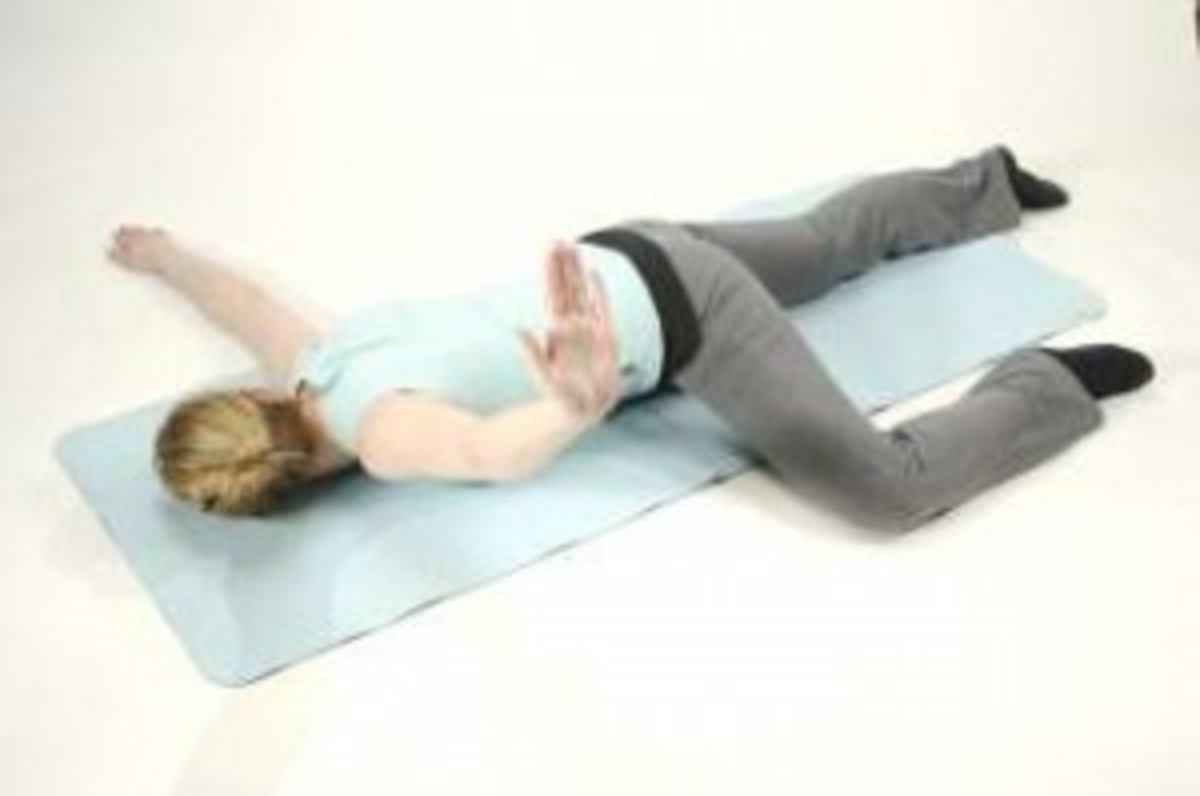
Step 6: Return to the original position and repeat step 2. Your range of motion should be much greater now.
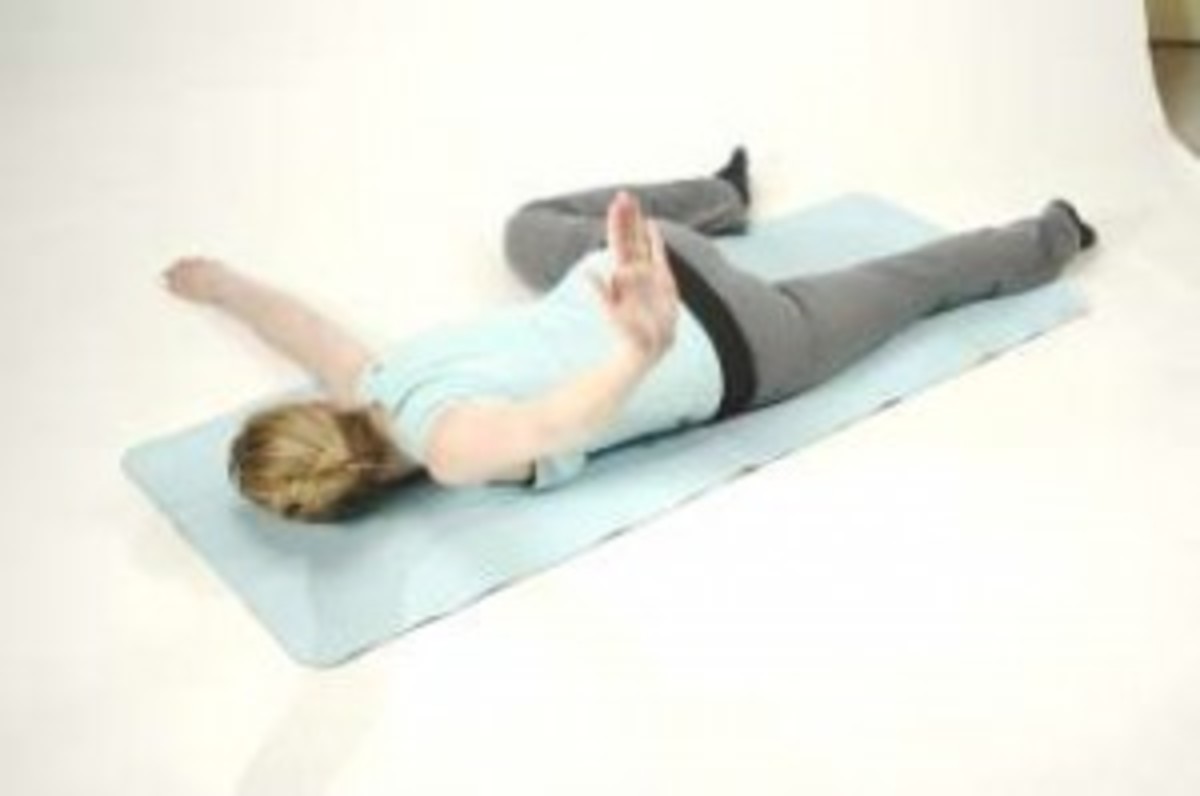
Step 7: Change your body orientation to the right side (head turned to right, right knee bent) and repeat the entire exercise with your right arm.
Exercise 7: Walk on your shoulders
Benefit: This mobilizes your shoulders and upper torso, helping to correct upper-body alignment problems and blockages that may be interfering with your ability to follow your horse’s motion with your seat and coordinate your upper body movements and aids with those of your lower body.
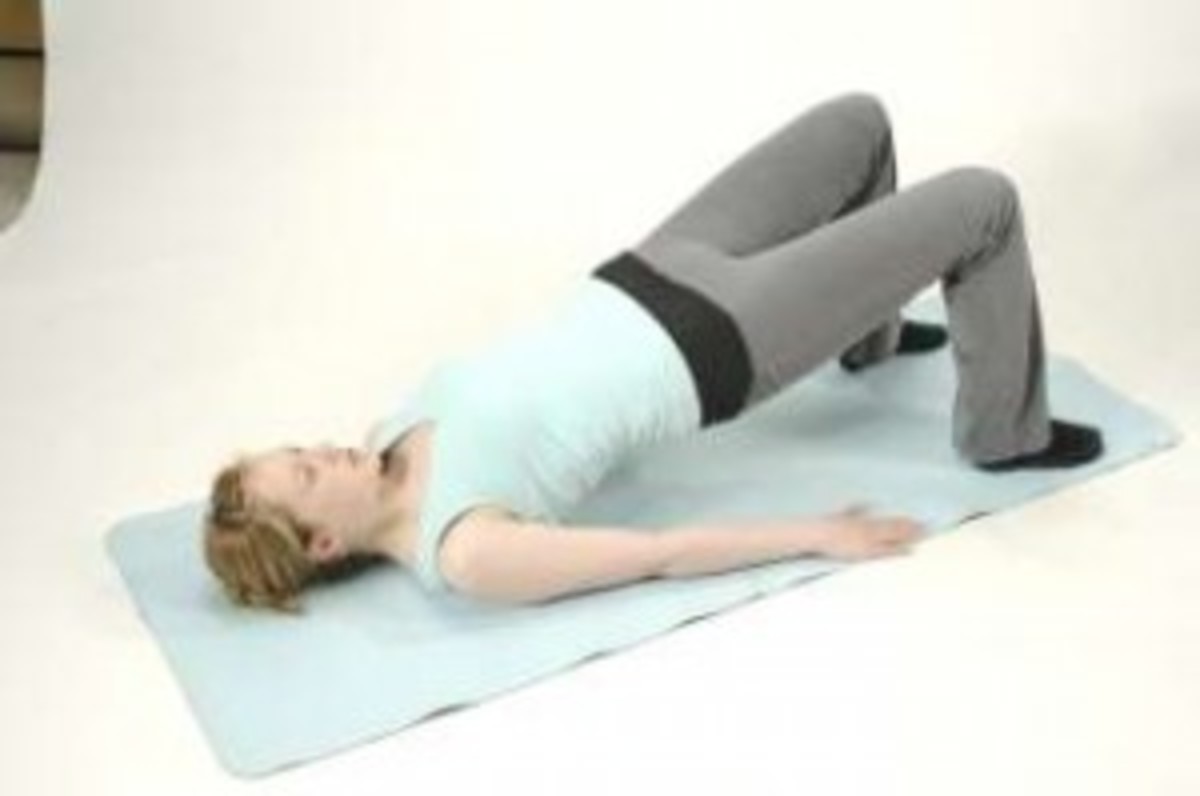
How to do it: Step 1: Lie on your back with your arms at your sides and your knees bent. Lift your pelvis off the ground so your torso and thighs are in a straight line and your lower legs are perpendicular to the ground.
Step 2: Press your shoulder blades against the ground and let your head gently turn to the left and right. Then return to looking up toward the ceiling.
Step 3: Keeping your pelvis in line with your thighs and torso, “walk” your legs sideways in a circle around your shoulders.
Step 4: Walk sideways around your shoulders in the other direction.
Eckart Meyners is a Professor of Sports Physiology and Body Movement at the University of Luneburg in Germany. Over the past 25 years, he has researched how people learn movement in riding and has worked with the German National Federation to develop curricula for professional and amateur riders, trainers, instructors and judges. He is known throughout Germany as an expert in the area of how to teach movement in riding as well as other sports.
This article originally appeared in the August 2007 issue of Practical Horseman magazine.







